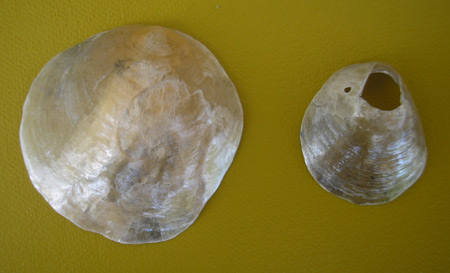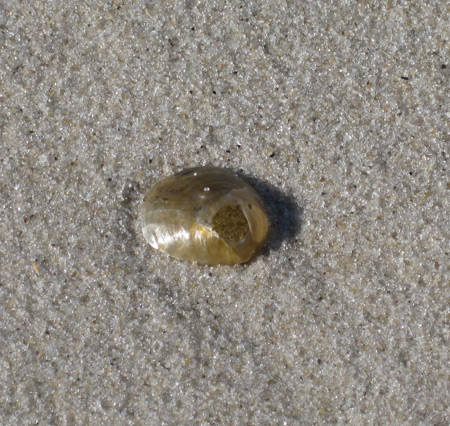Jingle shells are very thin and can be roughly circular to broadly ovate, from ¾ to 2 ¼ inches (~ 2 to 5.7 cm) long. The color varies with individuals exhibiting hues of yellow, orange, silver or white. The shell is translucent and is most commonly smooth with obvious growth lines. Some individuals have ridges or other patterns that mirror the substrate where they lived.

Two jingle shells.
Shallow water, typically in bays or estuaries, from low tide water line up to 30 (~ 9 m) feet deep.
This bivalve attaches itself to hard objects in the water. This may be other shells or any hard substrate. Threads, known as byssus, are used for attaching themselves to an object. The byssus extrude through a hole in the lower shell. The upper shells can also be compromised by a boring predator. Many jingle shells found on the beach have a hole in them.
Southern Massachusetts to Brazil.
The name jingle shell refers to the sound a collection of these shells will make when you jostle them together. If you find a collection of these shells on the beach, simply hold a few of them in your closed hand and shake them to hear them jingle. This is one of the reasons you can find wind chimes made of these shells.
The coloration and general appearance of jingle shells have led to their having a number of interesting common names such as Mermaid’s toe nails (with the colors suggesting the use of nail polish!) and Neptune’s toe nails.
Anomia simplex are related to oysters hence another common name is “Saddle Oyster.” Unfortunately they have a bitter taste and are not good eating.

Anomia simplex shell washed up on the beach.
